Understanding what icons are in graphic design is crucial to the creation of logos, visual identities, and visual information.
So:
What is an icon? Icons are simple graphic representations designed to express the essential visual characteristics of things and ideas in order to communicate or inform in a direct and universally recognizable way.
Getting an icon right is an essential skill for any graphic designer. So, if you want to become an effective designer, you need to understand what icons are, their essential elements, and how they communicate.
Let me explain:
MY NEW ONLINE COURSE
Thinking Like a Designer
Learn my proven method to finally understand the rules of any design and jumpstart your path to become an effective graphic designer
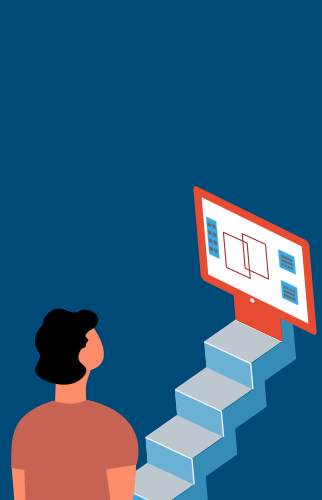
What Are Icons in Graphic Design?
Icons are everywhere. You see them in logos, at the airport, on charts, and phone apps. They are a huge part of communication today, since everything we consume is first and foremost visual information.
In fact:
Icons are information. They express actions, ideas, or feelings. They communicate with minimal effort, in a universally (or widely accepted) recognizable way. Icons are direct, straightforward, and to the point. They are simple but accurate. They can be cute, clever, or slick.
The first thing to understand about icon design is this:
Effective icons show only the most minimal characteristics of an object or idea, and yet they are accurate and undisputable. They are not open for interpretation or ambuiguity.
That is:
An effective icon is able to extract the most essential visual qualities of a thing or idea in order to make the representation readily recognizable.
Here’s an example:
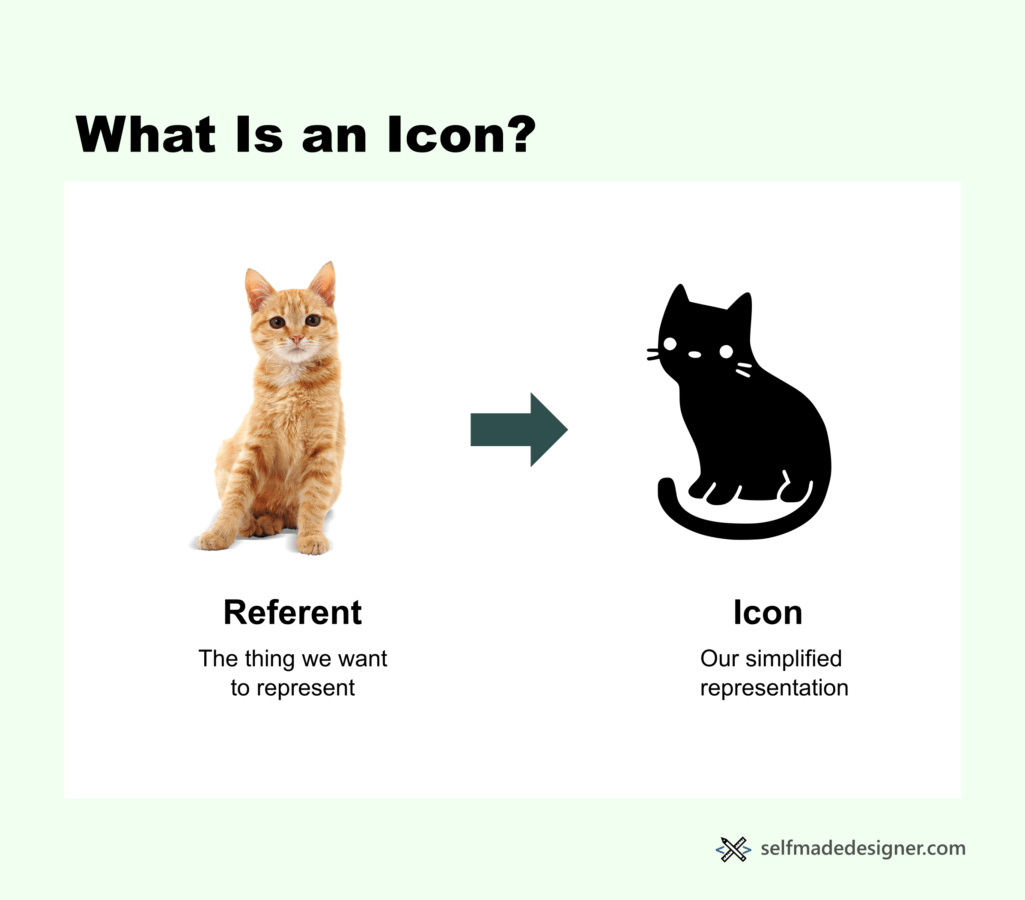
This image shows two representations of a cat. The photo of the cat represents the thing as it is, full of richness and visual details, such as colors, texture, and depth.
Next to it is an icon of a cat. Compared to the cat photo, it is only a very minimal representation of a cat. And yet, we are able to indisputably tell that that, in fact, represents a cat. Some essential elements are the ears, the tail, the whiskers, and the overall silhouette.
This is the gist of iconic representation.
Here’s another thing to understand about icons:
Because they are a reduction of the thing or idea, they are “lightweight.” This means that they can be used in many contexts, especially those that depend on readily accesible, reliable communication. This is why icons are everywhere we look and are used for a ton of graphic design applications.
And, finally:
Icons are extremely important in graphic design because us humans are primed to read and extract information from them. That is:
Icons are useful pieces of information that make our lives easier.
In fact, many studies show the importance of icon design for human communication and actions, such as icons for finding information, or the different levels of human recognition of iconic design.
It all boils down to this:
In today’s visual culture, icons are a huge part of our navigation and understanding of the world around us. We depend on icons for reference, information, and coordination of actions. We need icons for looking through a large menu, navigating web apps, or finding our way in a foreign country.
As humans, we depend on icon design, which is why effective icon design is an essential part of the graphic design profession.
Want to Create Icons?
Check out these easy tutorials:
Pictograms and Ideograms: Elements of Iconic Design
There are two important concepts that closely connect to iconic design that you need to understand: Pictograms and ideograms.
What Is A Pictogram?
What is a pictogram? A pictogram is the literal representation of a thing that exists in real life and that is universally recognizable.
In our previous example, the icon of a cat is a pictogram because it represents the thing in real life (the animal). Someone from the US or Japan would recognize the pictogram since the thing “cat” exists universally.
For this reason, pictograms are easier to design, since there is no ambiguity in what they represent.
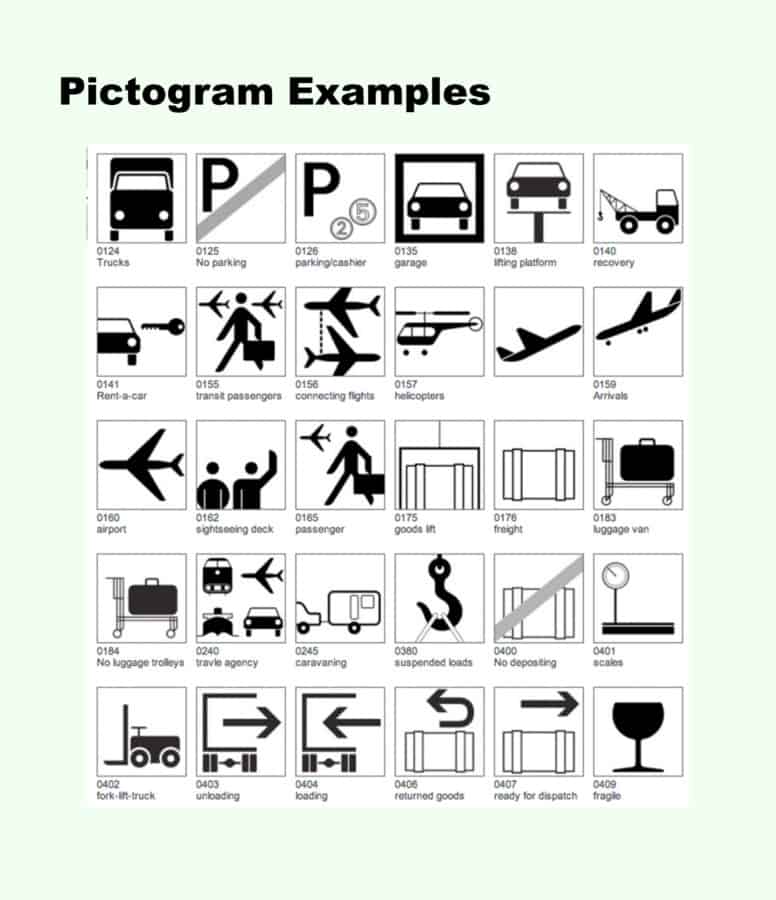
What Is An Ideogram?
An ideogram is a little different from a pictogram.
What is an ideogram? An ideogram is the iconic representation of an abstract idea. Because ideas are not fixed and vary from culture to culture, ideograms depend on cultural knowledge for communicating effectively. Contrary to pictograms, ideograms do not communicate universally.
An example of an ideogram may include the “heart” icon that cultures from the West recognize as “love” or the symbol that represents “radiation.”
Note that there is nothing in the “heart” or black and yellow triangles symbol that inherently or intrinsically communicate being in love or nuclear fallout, respectively. By growing in a specific culture, we become accustomed to recognizing these symbols for these purposes.
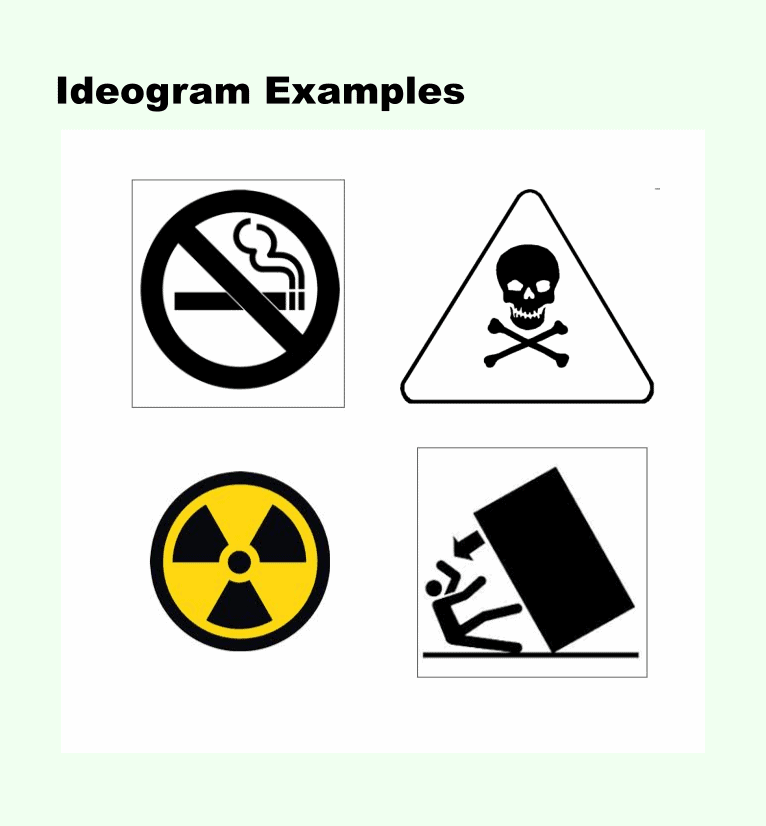
There’s another thing about ideograms:
Because ideas are sometimes hard to express visually, sometimes we use combinations of pictograms to express an ideogram.
That is:
We may combine different representations of real things to express an action or idea that is taking place.
However:
You should always use the minimum amount of pictograms to just communicate the idea you want to express, and no more. For this, you may combine pictograms and abstract symbols, as long as they are recognized by your audience.
Examples of Icons in Graphic Design
There are many, many examples of icons in everyday life. Airports use icons for directing people, the military uses icons for communicating its complex rank system, logos use icons to express a quality of a brand, digital apps use icons for showing us how to interact with it, infographics use icons for synthetizing data and information.
Below I show you examples of icons in different graphic design applications:
Icons in the Olympics
Otl Aicher is deemed as a pioneer of icon design. He is famously recognized for the pictograms he created for the 1972 Olympics in Munich. His work represents the universality, simplicity, and accuracy of effective iconic design:
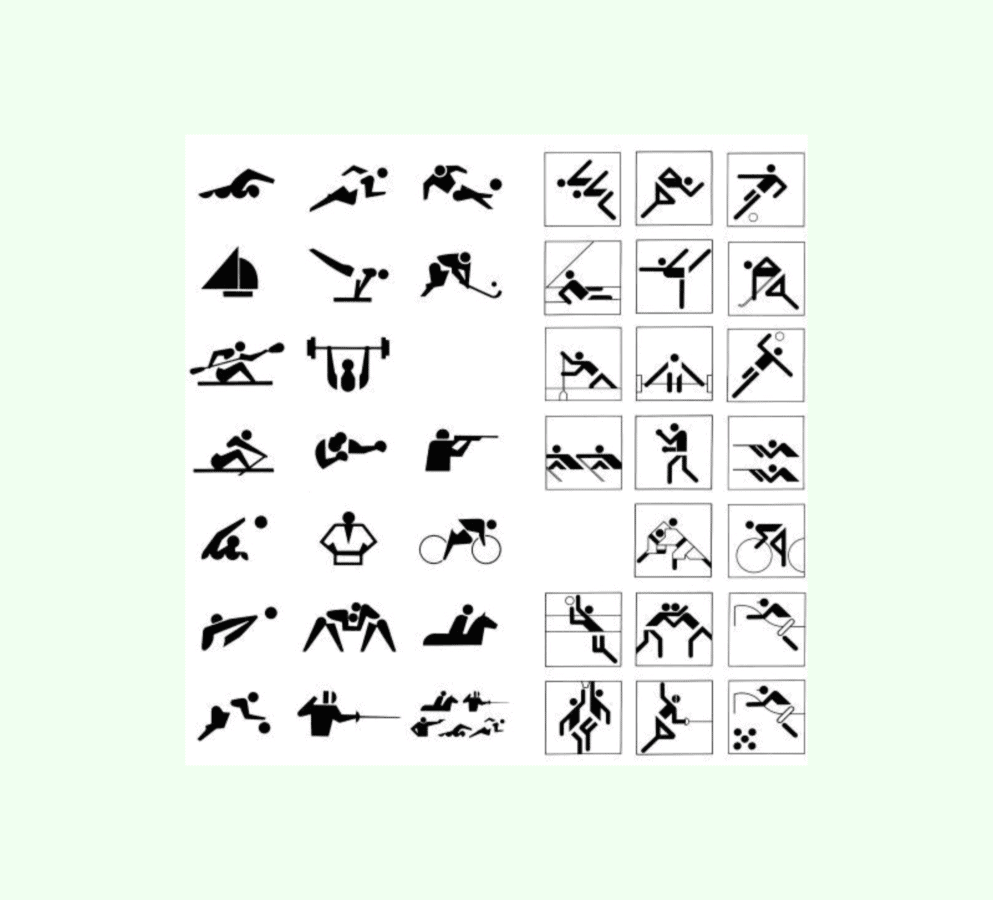
Icons in Logo Design
Icons have become an integral part of the visual identity of brands and organizations. In fact, logo design in many ways is iconic design, since logos have to communicate simply and decisively the essence, attributes, objectives, or feel of a brand.
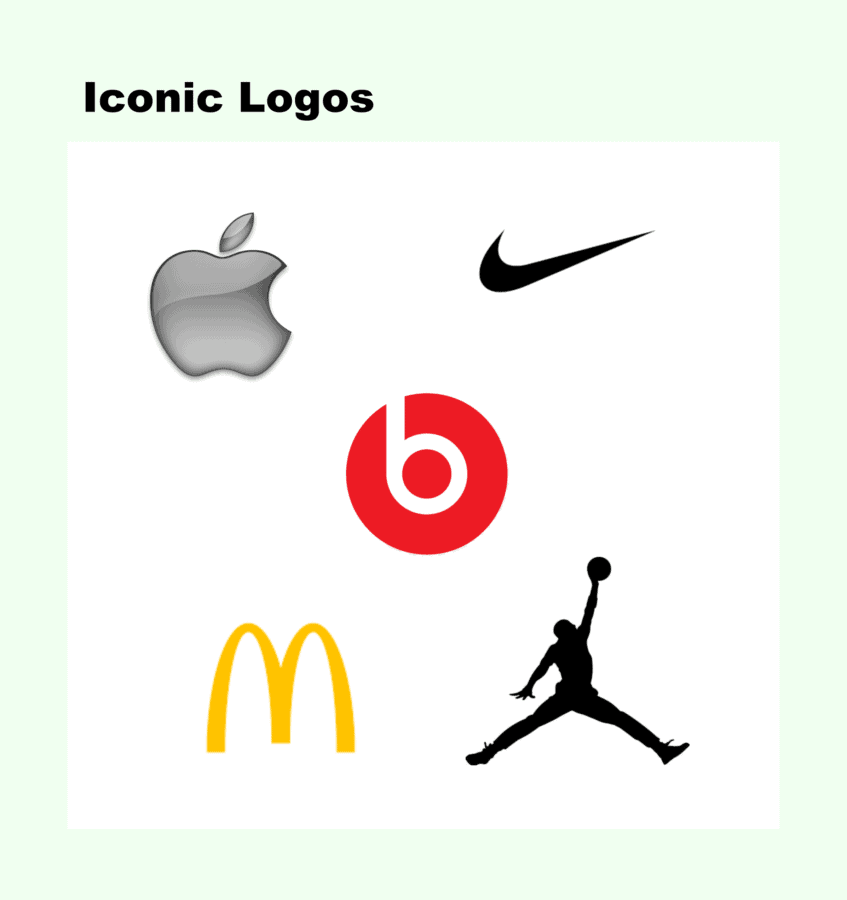
Icons in Digital Applications
User interfaces depend on iconic design. The reason is that interfaces must be plain and compact, and therefore can’t rely on textual information to direct user actions.
Susan Kare is a pioneer of iconic design in user interfaces. As a designer for Apple, she created a revolutionary array of icons that directed user actions but that were also fun and precise.
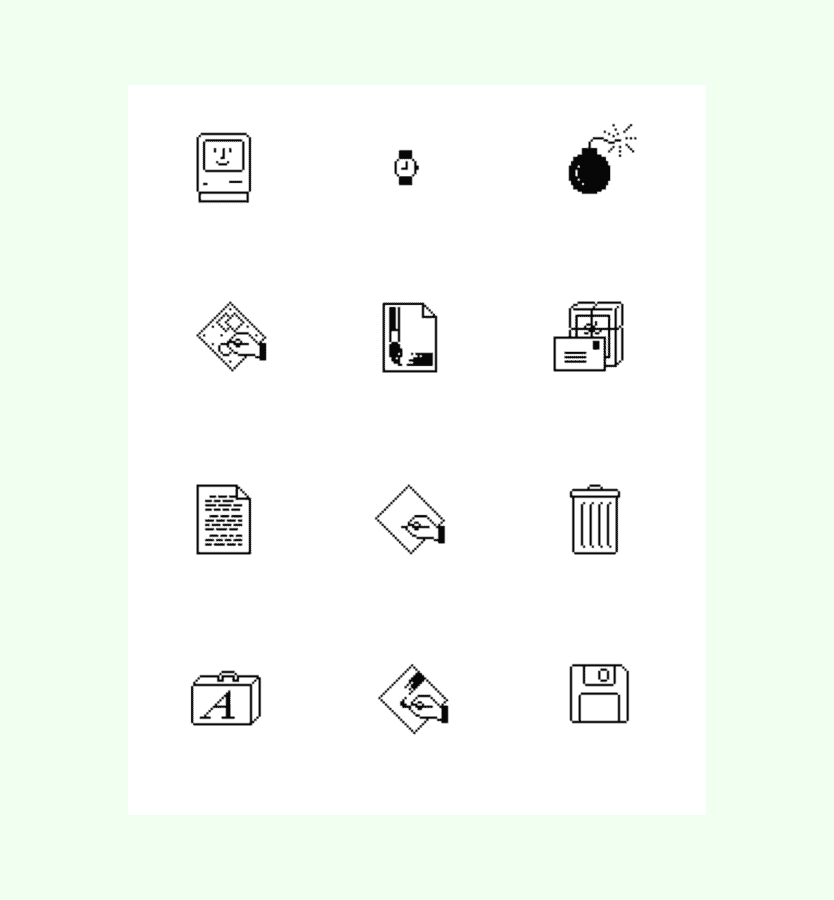
Icons in the Military
Complex hierarchical structures, such as the military, rely on icons to denote rank and establish relationships among their constituents.
The US military, for instance, has a complex system of symbols for demonstrating rank and order and, thus, directing human action inside their institution.
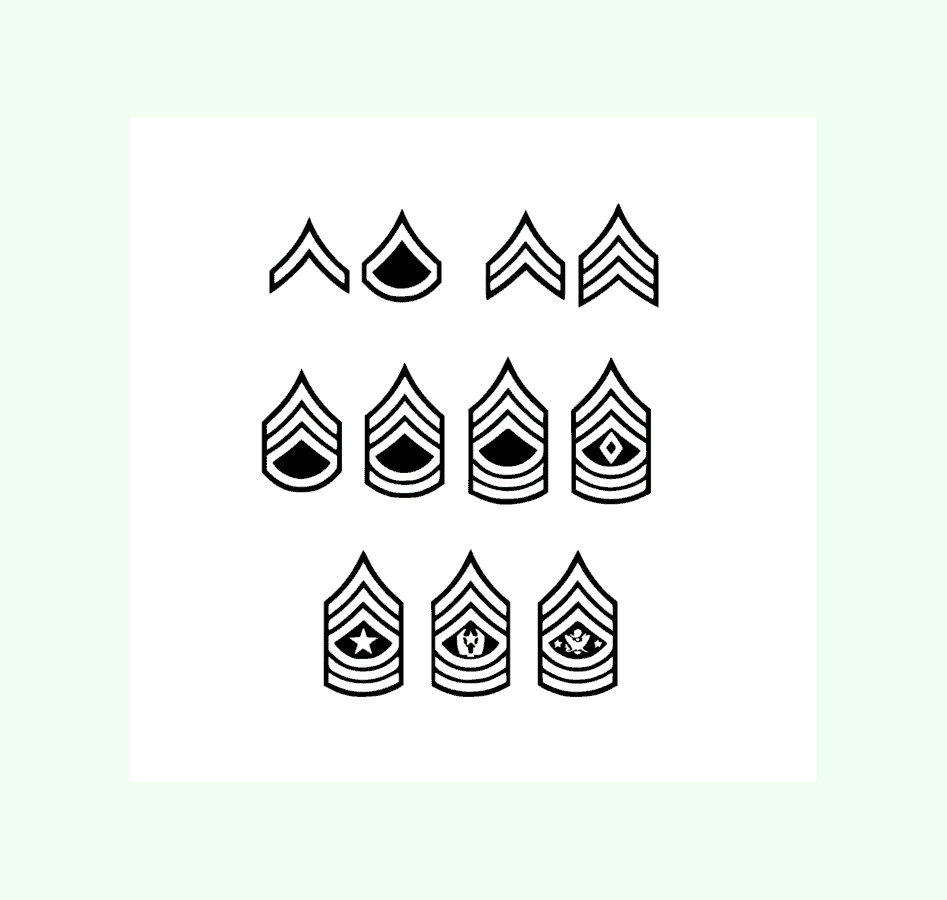
Conclusion: Icons Are Everywhere
As you can see, icons are an essential part of graphic design. Understanding what icons are, their elements, and how they work will teach you immensely about graphic design and will allow you to master different design applications, such as logo, information, and user interface design.
Here’s the summary of what you need to know:
- Icons are graphic representations whose objective is to visually express an object or idea unambiguously.
- En effective icon is able to extract the bare essential characteristics of a thing or idea in order to represent it simply and effectively.
- At the base of icons are pictograms and ideograms, which represent literal objects and things and ideas or abstractions, respectively.
- Icons are everywhere, and are used in information design, visual identity, user interface design, and even the military.
MY NEW ONLINE COURSE
Thinking Like a Designer
Learn my proven method to finally understand the rules of any design and jumpstart your path to become an effective graphic designer


Hii ….
Sirr….
I dnt know anything about graphic designs but i want to become a graphic designer and now i just passed my 10th do what should i do for the very first time …..
Plz help me out …..